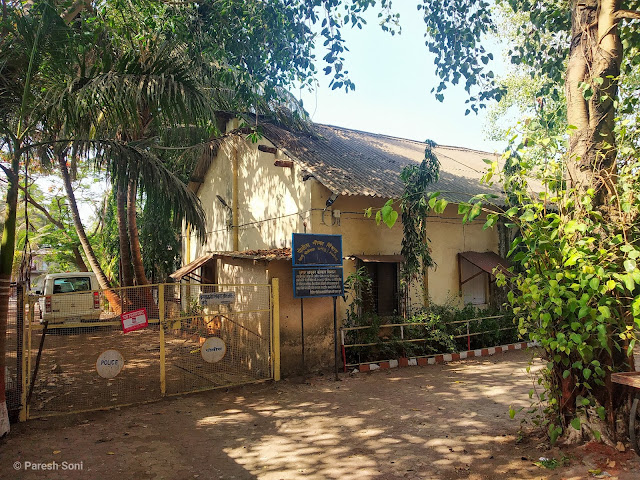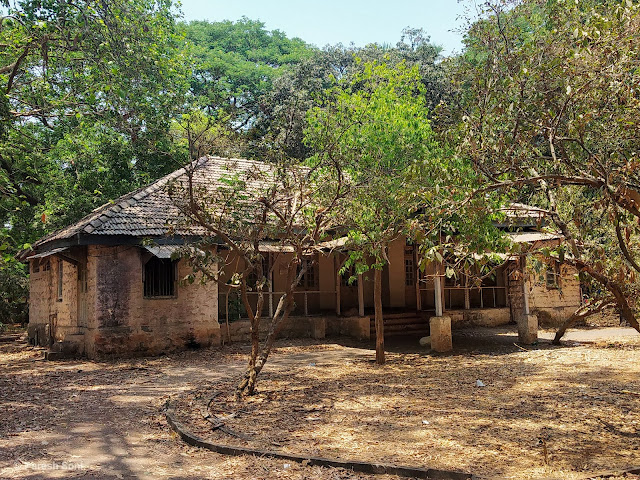Unique Hanuman temple which is protected by canons in Thane
On the eastern side of Thane lies Kopri creek also known as Chendani bunder, Today it is an area where the stench emitting sewage water flows in the creek and is known more for a place where idols of Ganesha is immersed during the festival of Ganeshotva. But Thane was once a flourishing international trading port dating back to the 17th century with trades between Kochi in the South & with the Middle East. Most residents of Koli village of Chendani, Mahagiri were involved in the trade. "Nakhwa" family of Chendani had 11 wind sailboats called "Phatemari" to transport cargo goods and was truly a Shipping corporation of that era.
During the end of the 17th century when Britishers took over the reins from Maratha Empire they converted the port into the main export center due to its peculiar geographical location among the mangroves. The first railway which ran between Bori Bunder to Thane dissected the Chendani area into the west side and east side. Britishers further developed Kopri (Chendani creek) into major salt exporting port and even built a customs office, a salt department, a forest department, as well as a separate railway track, which was laid between the port to Thane station to carry goods. Such was the importance of the place that once over 1000 people worked on this port. The importance of the area dwindled as trade diverted to other bigger ports on the western coast of India and infrastructure built around the port crumbled.
 |
| Buried Railway tracks portion |
 |
| Endpoint barrier |
But amidst all apathy and neglect by the administration, lies one of the last vestiges of the glorious past. At the far end of the road and close to the mangroves lies a temple of God Hanuman. The uniqueness of the temple and the importance of the place can be understood as one enters the temple compound.
It houses cannons !! Half buried in the ground. One of the local informed us that there were in total 26 cannons which lay scattered in the area, some hidden in the bush while some have been lost in the sea over the years, while some have got stolen or sold in scrap. Two cannons from here were shifted and are on display at Kala Bhavan & TMC office in Thane.
Today 5 cannons of varied sizes lay half-buried in the temple compound while 6 large-sized cannons have been placed on a raised platform and efforts are being taken to preserve them. The plan is to display them and even put information about them so visitors can get to know the history of the place.
But the main highlight of this Hanuman temple is only visible once you step inside. Jutting out of the floor of the temple & painted in color matching the temple interior is a three-foot cannon right in the middle of the temple !! There is no other location from where so many cannons have been found and this shows the kind of importance they place had earlier. Very few people know about these cannons and the history of Chendani bunder as an international port but some efforts have been made in this direction by some NGOs who have been at the forefront and have made efforts to showcase our interesting heritage. The cannons of Kopri have been silent spectators of Thane's transformation from a once busy colonial-era port to a modern concrete jungle.
An interesting story around the temple: They say that time was known to have been in existence since the Portuguese era but the current temple was built during the reign of the Britishers. One of the labourer who used to work in the port had a dream instructing him to build a temple dedicated to God Hanuman. It happened thrice with him hence the laborers decided to build a temple and asked for permission from the administration. They rejected the request which leads to a strike in the port. Finally, permission was granted and the laborers built the temple dedicated to Hanuman which has been standing for over 100 years.


















Comments
Post a Comment